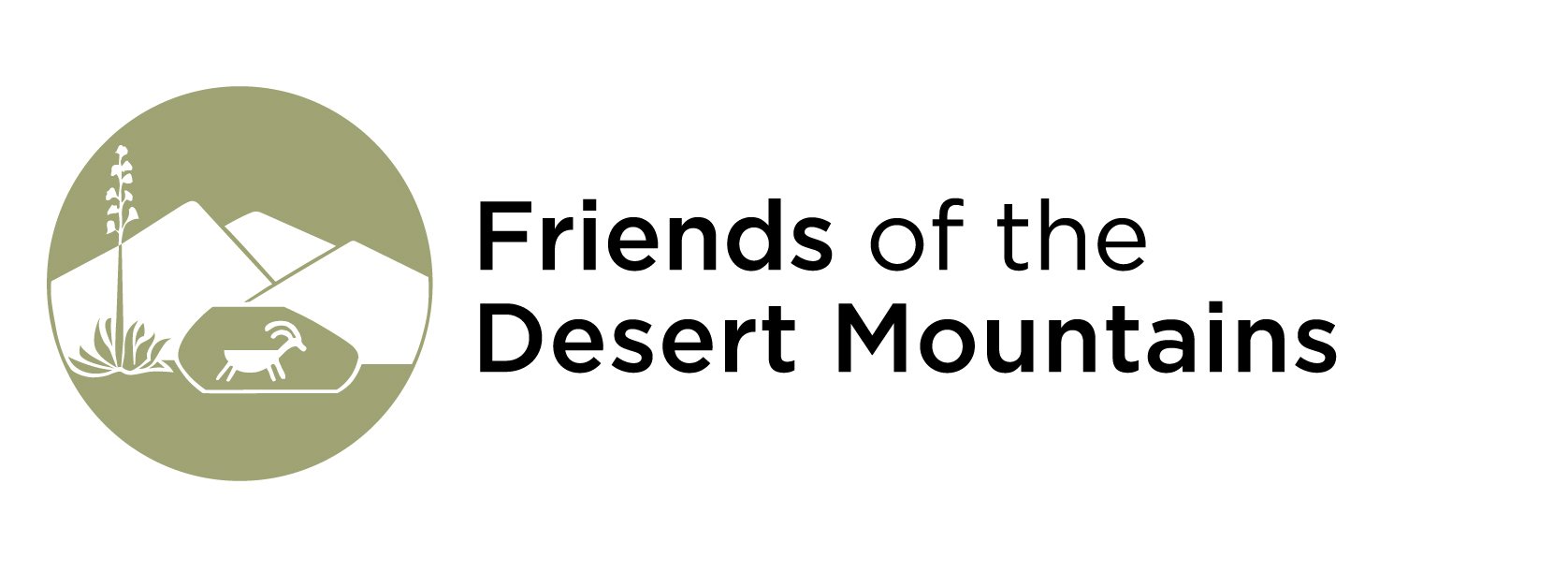Wildflower Watch
Discover the Desert As It Blooms
Part of the joy of watching desert wildflowers is seeing them develop over time, from tiny green seedlings to vibrant bouquets of purple, yellow, white, and red. Every day, new flowers are blooming at hotspots across the Coachella Valley, but there is also a special satisfaction in returning the same trail or patch and discovering new varieties of shapes and colors day after day.
This week the blooms at Santa Rosa & San Jacinto Mountains National Monument Visitor Center in Palm Desert have begun to peak. Abundant brown-eyed primrose around the visitor center are in full bloom and are beginning to set seed. Following the Randall Henderson Trail, brittlebush (Encelia farinosa) and chuparosa (Justicia californica) are covered in flowers, and higher up the trail flowers are still just starting to bud. Each new visit and step further along the trail brings new wonders!
As the season unfolds, some flowers will last for days or weeks, while others will open for only a few hours before they start to wither away and deposit their seeds into the soil, awaiting the next winter rains. This is part of the essential, ephemeral nature of the desert, and the amazing diversity of life found here in the Coachella Valley.
Tending the Wildflowers
The winter rain has been great news for a lot of thirsty desert plants and animals, but it brings bad news in the form of invasive weeds like Saharan mustard (Brassica tournefortii), which can grow into dense mats that smother native species. We can help protect wildflowers, and the unique animals that depend on them, by tending the natural desert garden all around us and pulling the invasive mustard when we encounter it.
The mature plants are hard to mistake for anything else, but it's best to get to them early, before they start sprouting flowers and seeds. Before you start pulling, there are a few similar native plants to watch out for. Here's how to tell them apart:
Browneyes: https://www.inaturalist.org/taxa/76333-Chylismia-claviformis
Brown-eyed primrose, or browneyes (Chylismia claviformis), is probably the most common annual wildflower in our part of the desert, and before it starts to flower it looks similar to mustard - a ring of leaves on the ground, or "basal rosette". The difference is that browneyes, and other related primrose species, have brown or dark green spots on their leaves. Don't pull these if you see them.
Notch-leaf Phacelia: https://www.inaturalist.org/taxa/49345-Phacelia-crenulata
Notch-leaf phacelia, or scorpion weed, has a very similar basal rosette to Saharan mustard, and can have similar hairs growing on the stems and leaves. From a distance, they can be hard to tell apart, but phacelia leaves will appear relatively smooth. Leave them in the ground - the purple flowers are some of the most conspicuous blooms along the trail!
Saharan mustard: https://www.inaturalist.org/taxa/75870-Brassica-tournefortii
You can tell Saharan mustard apart from nearly every other native plant in the desert by the "tubercles" - small bumps topped with hairs, evenly spaced over the leaf surface. Whenever you see those bumps, it's time to start pulling!
If you aren't confident in your mustard ID skills yet, you can use a phone app like iNaturalist to identify mustard - or phacelia, primrose, and the rest - just snap a photo and share. You can also join us on an organized mustard pull - visit our website to fill out a volunteer application today!
